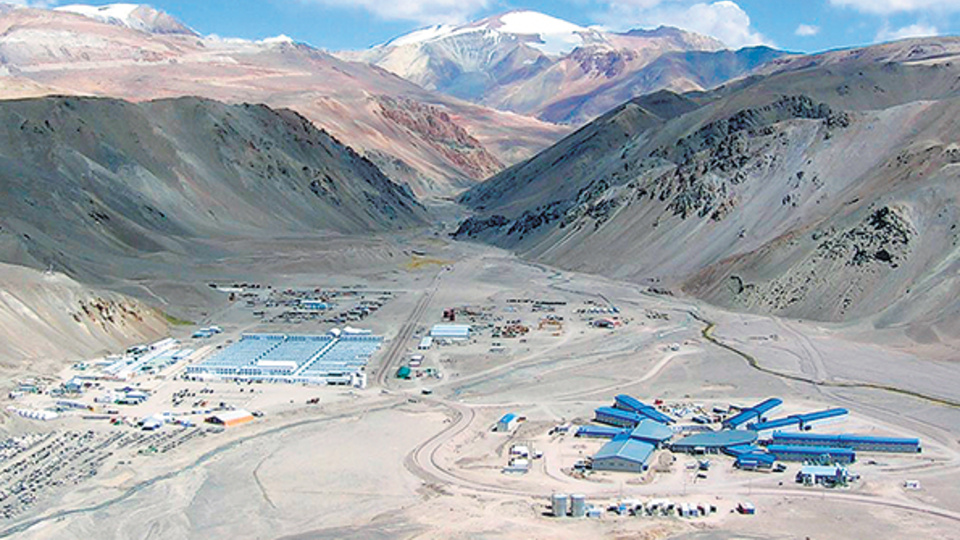
[ad_1]
The transfer of 100 tonnes of mercury from the Veladero Mine in San Juan to Santo Antonio Port in Santiago, Chile, crossing six provinces in northwestern Argentina, triggered the warning of environmental sectors and the allegation of lack of official information. on the measures implemented for the transport of this liquid metal at very polluting ambient temperature. However, the problem does not only concern the transport of the toxic substance, but also the remaining 340 tonnes collected by the mining company Andina del Sol since 2012, a commercial alliance between the Canadian Barrick Gold and the Chinese Shandong Gold, which operates the mine. . Sanjuanina According to the Jáchal Assembly's lawyer, Enrique Viale, for the accumulation of documents, the Criminal Court brought a lawsuit against Claudio Bonadio against the Secretary of the Nation's Environment , Sergio Bergman, complaint that was sent back from the secretariat.
The convoy carrying toxic waste in steel bottles, placed in containers transported in trucks, left the province of San Juan Wednesday at dawn towards the Paso de Jama, Jujuy, where he will visit the neighboring country. The final destination of the toxic material is a salt mine in Germany, where it will be buried after treatment in Switzerland, which will convert the liquid metal into mercury sulphide to solidify it.
Yesterday, a day after the departure of the operation and alarms triggered by the lack of information, the Ministry of the Environment provided details on the transport process.
The undersecretary for surveillance of the Secretariat for Environment and Sustainable Development, Juan Trebino, told PáginaI12 that the mercury transported "resulted from the production process of this mining activity.For several years, mercury was exported, transported and marketed, and no one said anything when elemental mercury was released with purity greater than 99% .Then, when they started to discuss international agreements that regulate their use, many countries stopped buying it and all those who generated it had to start collecting it because there was no global solution.In the center, the Treaty of Minamata (Japan-2013) eliminates its use, which Argentina ratified in 2017, and in this context and that of the Basel Convention, which governs the international transport of hazardous waste, he begins to seek solutions. "In this regard, he stressed that the options are "to collect or export the material in a country that has the appropriate technology to treat it and give it an adequate environmental solution".
According to the official, the export was the alternative proposed by the company Veladero – which had several complaints about the three cyanide spills between 2015 and 2017 – a solution that raised "enormous logistics" since the cargo will pbad through nine countries "to which he had to inform himself and obtain the agreement under the Basel Convention": Panama, Bahamas, the United States, the Netherlands, Belgium, France, Switzerland and finally Germany.
The transfer operation entrusted to the Swiss company Batrec and monitored by the environmental police of each country could leave the country today to go to the port of San Antonio, in the Chilean region of Valparaíso. "The exit by Chile had to do with the availability of shipments.Very few companies carry hazardous waste and, for security reasons, when crossing less populated areas, the risks are reduced", explained Trebino.
For Viale, he should have been informed and alerted of the populations where the transfer operation is taking place. The lawyer pointed out that the storage of mercury "is a time bomb" and recalled that "the law on glaciers prohibits the collection of hazardous waste on glaciers and periglacial environments, which is the region where is Based on this illegal accumulation of mercury in Barrick, which is in the Desaguadero River Basin, we denounced Bergman for violating the duties of a public official. "Prosecutor Alejandra Mángano asked for this instruction. . "
.
[ad_2]
Source link
 Naaju Breaking News, Live Updates, Latest Headlines, Viral News, Top Stories, Trending Topics, Videos
Naaju Breaking News, Live Updates, Latest Headlines, Viral News, Top Stories, Trending Topics, Videos